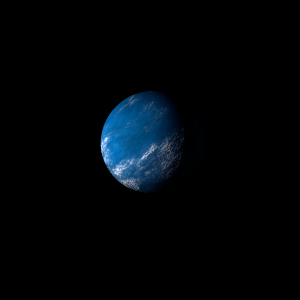|
|
Space Astro
|
Info for exoplanet "Takube"
| Scientific (actual) data |
|---|
| Name | Kepler-1454 b |
| Planet status | Confirmed |
| Radius | 0.168 |
| Orbital period | 47.0319 |
| Discovered | 2016 |
| Updated | 2021-02-05 |
| Tconj | 2455010 |
| Publication | Announced on a website |
| Detection type | Primary Transit |
| Alternate names | 2MASS J18565359+4849543 b, K03281.01, KIC 11177676 b, KOI-3281 b, KOI-3281.01, WISE J185653.59+484954.3 b |
| Star name | Kepler-1454 |
| Right ascension | 284.22° |
| Declination | 48.83° |
| Mag j | 13.623 |
| Mag h | 13.243 |
| Mag k | 13.189 |
| Star distance | 795 |
| Star metallicity | -0.02 |
| Star mass | 0.9 |
| Star radius | 0.86 |
| Star age | 4.57 |
| Star temperature | 5448 |
| Star alternate names | 2MASS J18565359+4849543, KIC 11177676, KOI-3281, WISE J185653.59+484954.3 |
| Wikipedia article | Kepler-1454 b |
Back
| |
| Fictional info (?) |
|---|
| Suggested name | Takube |
| Planet type | Cold planet |
| As seen from Kepler-1454, in a frame of reference that rotates with the orbital motion, it appears to rotate only once every two years.
tricky voyage. |
| Atmosphere | Helium | 44% |
| Formaldehyde | 25% |
| Methane | 23% |
| Water vapor | 7.7% |
| 2H2O | 0.0025% |
| Atmospheric pressure | 24 bar |
 |
| No known satellites |
| Google search for Takube |
|
Website by Joachim Michaelis
|
|
|
|